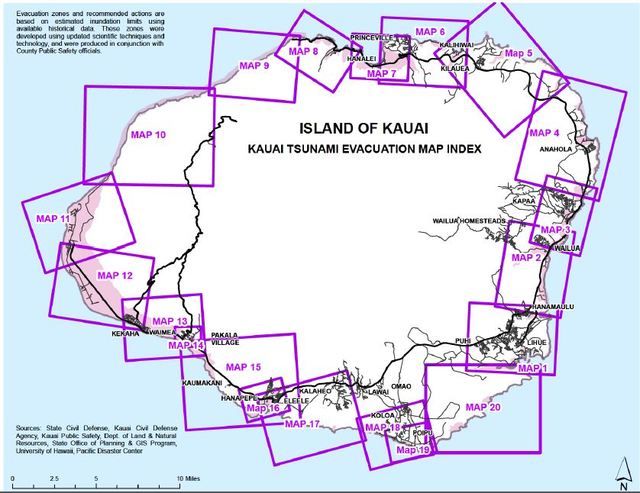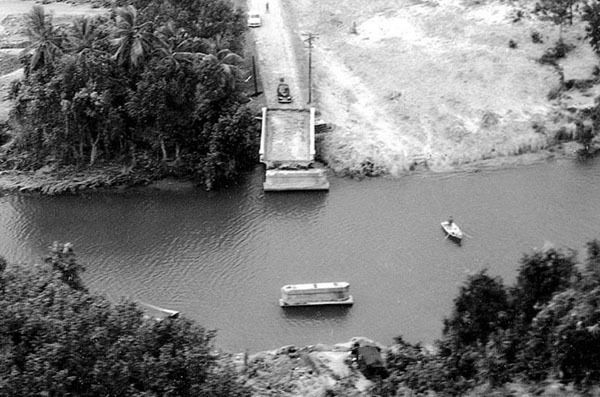Tsunami awareness


LIHUE — It’s important to have an action plan for tsunamis.
In fact, April is tsunami awareness month and entities statewide are asking citizens to get up to speed on the giant waves.
Gerard Fryer, senior geophysicist with the Pacific Tsunami Warning Center, recommends a tsunami preparedness plan.
“The job of everybody in a tsunami is to survive,” Fryer said. “Run it through your mind — what are you going to do if there’s a tsunami warning? How are you going to act?”
One example that worries Fryer and his colleagues is if a tsunami warning was issued during a school day. Schools are technically the entity in charge of the kids during such an event, but Fryer said lack of preparation could lead to chaos in that kind of situation.
“If parents haven’t thought about this in advance, they’re likely to panic and maybe to intercept their child during the school’s evacuation,” Fryer said. “Then the poor teacher is missing a child.”
Having a plan of action worked out with your loved ones will save time in case a tsunami ransacks the island.
“Run it through your mind and then when the inevitable happens, you’ll remember and automatically do the right thing,” Fryer said.
Potential epicenter of devastation
Large earthquakes, registering higher than 7 on the Richter scale, in the Aleutian Islands have generated the most impactful tsunamis for Kauai.
The quakes in 1946 and ’57 came from opposite ends of the island chain — there’s a gap in between, and that gap could be the epicenter of destruction for Kauai.
“If you have a big earthquake in that gap, it’s pointed right at us and that is in just the right spot that it could be bigger than what we’re prepared for,” Fryer said. “That’s the nightmare scenario.”
The reason the Aleutians are such a hotspot for earthquake activity is because the floor of the Pacific Ocean is sliding underneath the island chain. As the Pacific plate goes under the islands, it gets deformed and then snaps loose, moving parts of the sea floor and creating tsunamis.
“It happens probably every 200-300 years and we’re trying to figure out when the next one is going to be,” Fryer said. “Experts at the University of Alaska at Fairbanks have said right now there’s no strain accumulating.”
What is known about the activity in the Aleutian gap is that there hasn’t been a big earthquake since the area was settled in 1788, Fryer said.
Chile and Japan are two of the other areas that Kauai has to keep an eye on for tsunami generation.
And in 1952, a magnitude 8.2 earthquake in Kamchatka, Russia, generated a tsunami large enough to reach Kauai, but there wasn’t a full evacuation.
The Pacific Northwest could also generate a tsunami that could hit Kauai.
“Vancouver Island has a piece that is pointed at us and we’d get a big tsunami from that,” Fryer said.
Tsunamis can be generated on the Hawaiian Islands through a variety of ways, including earthquakes, landslides, volcanic activity, or if an underwater seamount collapses within the area.
“Believe it or not, the biggest hazard is still earthquakes,” Fryer said. “The big worry is that there might be an earthquake on the Kona side that would generate a tsunami that could reach Oahu in half an hour and Kauai in 45 minutes.”
The Pacific Tsunami Warning Center can generate a tsunami warning in three minutes from a local event, so Kauai would have a little under an hour to get to safety if that were to happen, Fryer said.
For a distantly generated tsunami, like one from the Aleutian Chain or Chile, Kauai gets a minimum of four hours’ notice, according to the Pacific Tsunami Warning Center. For locally generated tsunamis, the notice time could be a lot shorter.
According to the center, sirens will sound if there is a tsunami warning and there will be warnings broadcast over TV, radio and alerts sent via cell phone, which will provide more details, like estimated arrival time.
Signs that a tsunami may be approaching are strange whirlpools, water surging inland or receding out to sea, unusual sounds from the ocean, and — of course — an earthquake. In those cases, especially if you’re on the beach, don’t wait for a siren, experts say — move inland and uphill as quickly as possible.
“It’s like any disaster and you on Kauai, you’re experts in disasters. You’ve dealt with hurricanes,” Fryer said. “Tsunamis are the same thing, but the fuse is a little shorter.”
Kauai’s history
The last tsunami to cause significant damage to the island’s shorelines was in 1957.
That tsunami, which was the result of an 8.3 magnitude quake in the Aleutian Islands on a Saturday in March, caused an estimated $2 million in damage on Kauai, according to 1957 articles in the Honolulu Advertiser.
Days after the tidal wave, which struck the north coasts of Kauai and Oahu, the American Red Cross reported that the 32-foot wave had demolished 54 homes and damaged 27. The Red Cross reported that 600 Kauai residents were affected.
The other tsunami event that hammered Kauai’s North Shore was in April 1946, when a 7.8 magnitude earthquake originating in the Aleutian Islands generated a pair of waves, the first of which struck Kauai at 6:30 a.m.
Residences were demolished in Haena, Kalihikai, Kalihiwai, Moloaa and Wainiha, as well as Anahola, Wailua and Nawiliwili. The Honolulu Star-Bulletin reported that 14 people died, three were presumed dead, and seven were hospitalized for injuries.
Since then, Fryer said, three earthquakes have generated enough wave power to generate tsunami warnings: the 2010 Chile quake, the 2011 Japan quake, and the 2012 Canada quake.
“Looking back at 2010 and 2012, those warnings were borderline — we knew it wasn’t going to be really big, but it exceeded our threshold,” Fryer said. “In 2011, there was no question that a warning was necessary.”
Be prepared
Because of the potential for such a large tsunami, counties across the state are updating tsunami maps.
“KCDA (Kauai County Civil Defense Agency) is planning to do a launch of the updated tsunami evacuation zone maps, with corresponding county, state and federal website updates,” said Elton Ushio, emergency management administrator for Kauai County.
Fryer, Ushio and even the Federal Emergency Management Agency all recommend the same thing — be prepared, have a plan, and don’t panic.
“Make sure you have key emergency supplies, run it all through your mind, and remember that you’ll probably want to start moving pretty quickly before the roads jam up,” Fryer said. “Especially Kauai — you have a coast road and the last thing we want is for you to be stuck in your car when the tsunami arrives.”
Fryer said it’s good to remember that in natural disaster situations cell phones might not be able to make calls, but texting could still work, and if local calls aren’t going through, there’s a chance long-distance calls would still work.
“It all depends on the burden of the system,” Fryer said. “If we called a tsunami warning, the cell system would probably be saturated within half an hour, but you could still maybe get out a long-distance call.”
